CONTEMPORARY ART REVIEW

NICHOLAS MACNEIL

Installation • Painting • Mixed media • Drawing • Performance • Public Art • Drawing • Video art • Fine Art Photography Biennial Edition Special Edition
Missing Object IV, 2018 oil on canvas,125x80 cm a work by Szabrina Maharita (Hungary)
SZABRINA MAHARITA
GERGELY BUKOVINSZKI
ALEXANDRA UCCUSIC SOPHIA PAULEY ANETT UDUD ANIA LUK
ZELENE SCHLOSBERG SAÚL G. CORONA
Be that as it may, this catalog or any portion ther eof may not be reproduced or used in any manner whatsoever without express written permission from Peripheral ARTeries and featured artists.
 Installation by Saúl G. Corona
Installation by Saúl G. Corona
Lives and works in Warsaw, Poland
lives and works in Chicago, Illinois, USA
lives and works in Barcelona, Spain
lives and works in Dublin, Ireland

Lives and works in Edinburgh, United Kingdom
Lives and works in Vienna, Austria

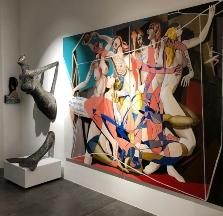
Lives and works in Brighton, United Kingdom
Lives and works in Toronto, Canada
Lives and works in Budapest, Hungary
Special thanks to: Michael Betancourt, Teresa Wells, Jared Schaffer, Jean-Claude Bise, Ashley Cassens, Hildy Maze, Karissa Hahn, Juliana Pepper, Jane Sheiko, Max Savold, Julia Überreiter, Deborah Esses, Margaret Noble, Joseph Goddard, Nathalie Borowski, Marco Visch, Xavier Blondeau, J.D. Doria, Matthias Callay, Luiza Zimerman, Kristina Sereikaite, Scott D'Arcy, Kalli Kalde, Carla Forte, Mathieu Goussin, Evie Zimmer, Dorothee Zombronner, Olga Karyakina, Robert Hamilton, Isabel Becker, Clare Haxby, Carrie Alter, Jessica Bingham, Agnieszka Ewa Braun, Fabian Freese, Elodie Abergel, Ellen van der Schaaf, Courtney Henderson and Francine LeClercq
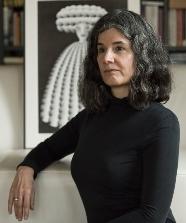
Peripheral eries CONTEMPORARY ARTREVIEW
3
T REVI
Contents
Special Issue
Szabrina Maharita, The VICA series, Mixed Media, 2018
Saul G. Corona
204 108 132
Sophia Pauley
48
Alexandra Uccusic
Peripheral ARTeries meets
Ania Luk
Lives and works in Warsaw, Poland
I am an artist, graduated at the prestigious Warsaw Academy of Fine Arts. As Michelangelo once said at the age of 87 :”I am still learning”. I co-operate with leading galleries and art dealers around the world and my artworks have already been exhibited in the USA, South Korea, the UK, France, Italy and Poland.
After graduating, I had been painting for pleasure for a few years. Currently I paint on canvas one-off artworks, using mainly acrylic paints. I find a great pleasure in painting women, who are my biggest inspire. Characters are often situated in the abstract, non-defined space, because I have an interest in highlighting the beauty of the human body. I prefer soft colors and rarely use very vibrant ones. There are many artists, who I look up to, but my favorites are Modigliani and Klimt and from Polish artist – Wroblewski and Nowosielski.
Hello Ania and welcome to Peripheral ARTeries. Before starting to elaborate about your artistic production and we would like to invite our readers to visit https://www.anialuk.com in order to get a wide idea about your artistic production, and we would start this interview with a couple of questions about your multifaceted background. You have a solid formal training and you graduated from
the prestigious Warsaw Academy of Fine Arts: how did those formative years influence your evolution as an artist? In particular, how does your cultural substratum due to your Polish roots direct the trajectory of your current artistic research?
Ania Luk: Hello and thank you for having me.
I was born and raised in communist Poland and I still have a vague reminiscence of endless queues , dulness and hideousness. As an anecdote I recall that my biggest and
SPECIAL ISSUE 4
Special Edition agazine Contemporary Art Peripheral eries
An interview by Dario Rutigliano, curator and Melissa C. Hilborn, curator peripheral.arteries@europe.com


2, 120x80cm 2018 acrylic
Pattern
unfulfilled childhood dream was a pink jacket and a Mickey Mouse blouse... It seemed like a synonym of luxury to me at that time. But it was for my grandmother's stories of her childhood during the interwar period, that had the huge impact on me. It was actually like a paradise lost, and I was soaking up these tales. It resulted in my interest of this particular period which became a magical, mythical time for me, to the point that some references can be found in my paintings like for e.g. geometrical themes in the Pattern series.
As a child I loved drawing women’s characters inspired by my mother’s journals. I used to dream of becoming a fashion designer one day. Later, I started attending various drawing and painting classes and I was also taught by experienced painters. So, it was a natural step for me to go to the Academy of Fine Arts.
Art studies gave me more self-awareness. I started to dig deeper inside me. I also had a chance to open myself, start seeking my own way and confront it with other artists point of view. Due to versatility of the studies, which combined painting, as well as graphic, furniture and interior design I could develop my creativity and manual skills.
They also required a lot of hard work, as I usually spent all days at the university. It taught me that the artist's workshop is something you gain throughout the years of hard work and self-discipline.
Actually, the ability to grow in any field, requires a consistent, systematic approach.
I am a great fan of the old school way of painting , artistic workshop, that is why I paint every day, so as not to fall out of the rhythm of working by the easel.
For this special edition of Peripheral ARTeries we have selected your Pattern series, a stimulating project that our readers has already started to get to know in the introductory pages of this article. What has at once captured our attention of your body of works is the way you sapiently combined the figurative refined with geometric abstraction, with such unique rigorous aesthetics: when walking our readers through your usual setup and process, would you tell us how do you usually develop the initial ideas for your artworks?
Ania Luk: This is a difficult question , actually I have never really thought about it. An idea is such a transitory matter, so it is difficult to capture this one particular moment of its appearance and then readiness to be transferred onto canvas. Since my painting is based mainly on emotions, my ideas are born this way, They just come out of the blue. It's like an inspiring painting, a piece of fabric, an old photo that just makes the idea start sprouting, or even initiate a new series of paintings. Some images are inherently haunting, but I need time to perceive them, sort them in my head. They accompany me until I am ready to put them on canvas.
I almost never sketch my ideas or take notes of it. I do not design a picture from the beginning to the end, let's say it is a
7 SPECIAL ISSUE
Ania Luk eries Contemporary Art Peripheral agazine
cooperation of fortuitousness that sometimes surprises. But obviously it is a controlled fortuitousness.
Sometimes I have the impression that some of the pictures create themselves, with a little bit of my help. Or rather - I do not hinder them. My favourite paintings actually "painted" themselves. Really.
New York City based artist Lydia Dona once stated that in order to make art today one has to reevaluate the conceptual language behind the mechanism of art making itself: do you create your works gesturally, instinctively? Or do you methodically transpose geometric schemes?
Ania Luk: My way of painting is definitely not a gestural one or a dynamic, instinctive splashing paint on canvas. It provokes too much fortuitousness which destroys the artistic individuality, and I want my style to be unique and exceptional. A material piece of art has always been a symbol of a workshop artistry and a culmination of a deliberate creative process and I identify it with my art.
In my case, this is a thoughtful, methodical work. Every single line has a crucial meaning to me - until each of them fits in perfectly on the canvas surface - the work is not finished. Sometimes my paintings happen to hang for a week or two so I am able to observe it from different angles until it finally "clicks". Sometimes it's a really difficult cooperation. This is because the form is not only an illustration of the idea for me, but is a value itself.
As you have remarked, geometrical schemes are characteristic for my paintings because they seem a natural choice for me. I have a necessity to organize the world around me in every way, and geometry brings peace and order, where there is chaos. Perhaps this is due to the huge amount of emotions that I carry inside, with the constant pursuit of perfection. These two realities interpenetrate in my paintings. It's like a constant battle of two elements. The stillness on my paintings is only ostensible, with the emotions bustling beneath.
We have really appreciated the vibrancy of thoughtful nuances that mark out your artworks, and we like the way they create tension and dynamics. How did you come about settling on your color palette? And how does your own psychological makeup determine the nuances of tones that you decide to include in a specific artwork and in particular, how do you develop a texture?
Ania Luk: As for the range of colours, it is quite wide, but there are colours which I approach cautiously, such as all shades of green. Greenery can appear in details, but it is definitely not my colour. I count on cool but luminous colors.
The colours in my paintings depend on the current mood, attitude or even time of year. They also refer to idea I am struggling with. Pattern series is definitely more subdued than for e.g. Supergirl series, which is much more vibrant and vivid. I would use dark colours in the past, to the point that I even grounded the canvas
8 SPECIAL ISSUE
Special Edition agazine Contemporary Art Peripheral eries
 Pattern 3, 120x80cm 2019 acrylic
Pattern 3, 120x80cm 2019 acrylic
with my favorite Van Dyck bronze, and only then I was ready to start painting. I don't do this any more. Nowadays I seek for brightness in colours.
Presently, I look for a combination of light, lucent tones of the background with dark bronze or navy blue, which define the depiction of a woman. Geometric, fragmented shapes form the abstract background on which a dark sharp line


appears, like in Summertime series. Pattern series is however constructed a little bit differently.
Someone told me the other day, that my paintings remind him of stained glass and although it surprised me at first, I must admit there is something about it.
I like to apply several layers of acrylic paint with a painting knife, which is my main tool, in order to obtain a smooth board structured
10 SPECIAL ISSUE Special Edition agazine Contemporary Art Peripheral eries
Pattern 4
120x80cm 2019 acrylic
Pattern 25
120x80cm 2018 acrylic

Summertime 7 90x60 cm acrylic 2019
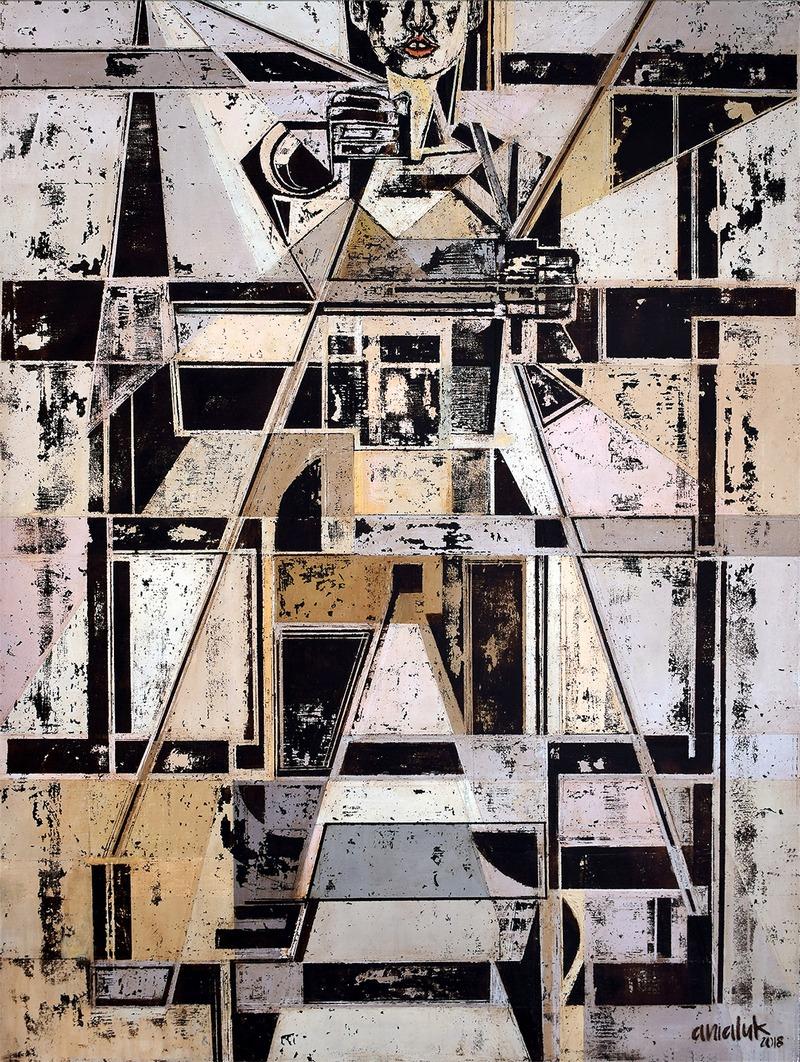 Supergirl 6, 2018 acrylic 120x90 cm
Supergirl 6, 2018 acrylic 120x90 cm
surface. Some of the viewers are surprised when they find out it is actually a canvas. I also like when the surface has a diverse structure - partly smooth and partly a natural canvas structure.

In your recent series, you have been touching ‘difficult topics’ such as narcism, perfectionism, self-centeredness of a ‘SelfieGeneration’, feminism, materialism, beauty and sexual freedom of 21st century. Mexican artist Gabriel Orozco once remarked that

"artists's role differs depending on which part of the world they’re in. It depends on the political system they are living under": do you think that your artistic research responds to a particular historical moment? Moreover, how do you consider the role of artists in our globalised and media driven contemporary age?
Ania Luk: I am not fully convinced if such a statement is adequate in the current and, as you defined it, globalised world. Over the
Ania
eries Contemporary Art Peripheral agazine SPECIAL ISSUE 13
Luk
Supergirl 4, 2017
120x80cm acrylic
Supergirl 5, 2017
120x80cm acrylic
centuries, art has always existed in a certain cultural, political and social context. It was so obvious. There were also periods of art degeneration, like under totalitarian regimes (national socialism and communism), when state terror really suppressed all manifestations of independence. This was also the case of Poland under the Soviet occupation, which caused the development of art here quite unlike than the one in the west. Ironically, during actual oppression,
Polish art was developing more dynamically, finding various interesting artistic languages, usually heavily involved in the current political situation. After the communism had fallen the Polish art started duplicating Western art experiments, loosing somewhat the question of its individuality and heritage.

What puzzles me is that nowadays, the dominant world's system is a liberal democracy, broadly associated with freedom, and yet contemporary art

14 SPECIAL ISSUE Special Edition agazine Contemporary Art Peripheral eries
Supergirl 7, 2018
120x80cm acrylic
Supergirl 9, 2018
120x80cm acrylic
 The 1st day of summer, acrylic 120x80 cm 2018
The 1st day of summer, acrylic 120x80 cm 2018
 The 2nd day of summer, 2018 acrylic 100x70 cm
The 2nd day of summer, 2018 acrylic 100x70 cm
continuously revolves around the slogan of freedom and liberation from oppression and the "system". When art is driven toward too much of a intellectual speculation, at the same time it is usually driven dangerously towards the organizer of the spiritual life of society.
I get the impression that contemporary art has split into two parts - one using artistic means and a part that manipulates intellectual speculation and enters the dangerous spheres of ideology, for example a disturbing trend focused on destroying and shocking in the name of art, but without any specific cultural context. It is like breaking norms and checking how much human sensitivity is able to withstand. In my opinion this leads to the misunderstanding of art and the reduction of human sensitivity, which after all art intends to refer to.
Since Dadaism questioned the exceptional status of the art piece and conceptual art questioned the sense of creating a material object as a culmination of the creative process, what more groundbreaking could be made up? I can't acknowledge any movements that have any indications of breaking the postmodern attitude and beginning of a new era. But I hope it would change in time.
With their powerful narrative drive on the visual aspect, your artworks seem to invite the viewers to look inside of what appear to be seen, rather than its surface, providing the spectatorship with freedom to realize their own perception. How important is for you to invite the viewers to elaborate personal meanings? And in particular, how open
would you like your artworks to be understood?
Ania Luk: I have a problem with this question because on one hand I think that the work should be understandable for the spectator, because otherwise it becomes hermetic, but on the other hand, as Degas said: "A painting requires a little mystery, some vagueness, and some fantasy. When you always make your business perfectly, you end up boring people. "
Actually I do not feel the need to translate my works, because it seems to me that art should defend itself. You either like or dislike it. I'm a little bit old fashioned, when it comes to art. I want it to operate primarily with artistic means, like well-balanced arrangements of lines, shapes and colours, which are expressions of profound emotions.
My art is a little bit withdrawn as I see it. Moving the spectator by sharpness of the message is not my style. I only indicate some problems and the rest is for the audience to understand or feel or whatever we name it. The diversity of interpretations is sometimes quite surprising for me, but I like it that way. Each spectator brings his own baggage to the process of contemplating the painting, so each relationship with the artwork will differ depending on the experience, preconceptions and sensitivity. While some are bothered with the question of the meaning , for the others, the key aspect would be a color, or the composition. Regardless of what draws the viewer's attention, for this one particular moment
eries Contemporary Art Peripheral agazine Ania Luk SPECIAL ISSUE 17

Broadway Luxury gallery, Summer 2018

two sensibilities encounter and this is what matters.
As you have remarked in your artist's statement, you find a great pleasure in painting women, who are your biggest inspire: do you think that your being a woman provides your artistic research with some special value?
Ania Luk: I do not think that being a woman would add artistic search for some special value. It is my own sensitivity that makes me perceive the world in this and not the other way. I do not like to generalize, but for sure the perception of the world by a woman and a man is different and this difference is also important when we talk about art. Women, perhaps are more emotional, more sensitive, it is in their nature.
I am not sure if the fact of being a woman influenced me to deal with such a topic, but female body fascinates me. When painting women, from a female perspective, I do not consider them objectively, because as a female I am not too objective myself either. I approach the subject which I am familiar with and which concerns me a lot, and that is when I can be truthful to myself and the audience. Female depiction is filtered by my feminine experiences and sensitivity, the way I perceive myself and other women.
Womanhood is a question that disturbs me, especially in today's world full of contradictions and tossing about the feminism.
What is femininity, what does it mean to be feminine, does it yet still have any value at
all, in the more and more genderless worldthese are constant questions I ask myself and I try, perhaps very inefficiently, express them in my paintings. Additionally, I combine it with purely formal searches such as linear body layout, arabesque, decorative ornament, which give me a lot of satisfaction and fulfillment- comparable with the moments when I admire pure beauty of works of Modigliani, Klimt or Polish artist- Nowosielski.
Painting is a physical experience that reveals not only a work of art but also a state of being: how do you consider the relation between the emotional nature of the concepts that you explore in your artistic research and the physical aspect of your practice?
Ania Luk: That's quite an intriguing question. The relationship between the concept and the material "product" of the artistic design is interesting. For me, the physical nature of the work is so important that I have a problem with understanding works that are based on a pure concept, reducing an artwork to action itself, or treating it only as an nonessential, provisional "illustration" of the concept. Joseph Beuys in his famous statement claimed "Objects aren't very important any more. I want to get to the origin of matter, to the thought behind it.": Well in my opinion it is quite the opposite. The idea is of key importance, but it is only the starting point, or rather the approach to the final form, which is the physical work of art like painting, sculpture, etc.
Over the years your artworks have been
Special Edition agazine Contemporary Art Peripheral eries 20 SPECIAL ISSUE

The 3rd day of summer, 90x70
2018
cm acrylic
Vibrant 1, 2018 acryllic 100x80 cm

Special Edition Contemporary Art Peripheral eries agazine 22 SPECIAL ISSUE
showcased in many occasion, including your recent participation to Cityscape 2019 at the CICA Museum, curated by Leejin Kim: before leaving this conversation we want to catch this occasion to ask you how importance has for you the feedback of the viewers: how do you consider the nature of your relationship with your audience? And what do you hope your audience take away from your artworks?
Ania Luk: The positive reception of my artwork pleases me a lot. It is of great importance, because it gives me a sense of accomplishment.
Being valued spurs me and encourage me to continue my work. This applies to every field of art and beyond. Nevertheless the reception of my artworks does not affect the way I paint. What I'm seeking is the truth and I'm trying to be honest with myself and the audience, and I guess this is This is my inner world, which I pour onto canvas, my sensitivity and my emotions, which in this way find an outlet. If I tried to adjust myself to the expectations of the viewers it would not be fair. By inviting the viewer to my internal world , I risk misunderstanding or at least indifference, but that is how it is. If he happens to have a similar sensibility to mine, also the aesthetic one, then these works will move him somehow. But it happens that he had shivers looking at him, this is a real compliment to me.
We have really appreciated the multifaceted nature of your artistic
research and before leaving this stimulating conversation we would like to thank you for chatting with us and for sharing your thoughts, Ania Luk. What projects are you currently working on, and what are some of the ideas that you hope to explore in the future?
Ania Luk: Thank you very much for this interview. For various reasons, I had had to stop my artistic activity for a while and returned to it after a few years’ break, so that is why I feel like I am at the beginning of my artistic exploration. My head is full of ideas, to the point that I have problems to decide where to start or which path I am supposed to chose this time. It is difficult to foresee what comes out of this.
I am trying not to plan for my future, in any specific way, because I believe, that planning is not good for my artistic experiments. I'm focusing on present works, which consume most of my time. I think that the most important matter is to develop as an artist and perhaps above all as a human being. With each new painting I try to work even harder, put more effort in it and challenge myself with each new piece.
Presently I focus on current projects, which I tend to continue. Since I paint in theme series, I keep coming back to them with fresh ideas. They are constantly open and complemented with new pieces, and I also have some new series coming up .
eries Contemporary Art Peripheral agazine Ania
23 SPECIAL ISSUE
An interview by Dario Rutigliano, curator and Melissa C. Hilborn, curator peripheral.arteries@europe.com
Luk
Peripheral ARTeries meets
Zelene Schlosberg
Lives and works in Chicago, USA
Many days of my youth were spent observing, in desultory fashion, the rustle of a stream; this was in Hunan Province, a southern part of China, land of a thousand rivers. While it did not occur to me at the time, meditations on nature enveloped my childhood.
There is something uncanny about water in motion, its ability to convey succinctly and profoundly the passage of time. I am not the first to notice this of course. Here is Heraclitus: “No man ever steps in the same river twice, for it's not the same river and he's not the same man.” Confucius had an opinion, too.
My new work seeks to address these elemental issues mainly on a flat surface that is usually both painted and “crafted”. Culling influences from the color field school, Minimalism, as well as Chinese ink paintings, these pieces often let the paint guide itself. For crafting, the techniques I employ are cutting, wrapping, stitching and crocheting. Holes in the canvas, pieces of rice paper, and dangling stones and paper balls, are not ornamental but rather central in addressing issues of transience and the powerful aesthetics of fragility. It is not an accident that these very themes, not to mention the materials themselves, are essential to certain streams of Eastern philosophy. My work dangles precipitously between painting and sculpture, bringing the viewer the silent but palpable experience of being between forms, with attention to line and architecture always present.
Hello Zelene and welcome to Peripheral ARTeries. Before starting to elaborate on your artistic production, we would like to invite our readers to visit http://www.zeleneschlosberg.com in order to get a better idea about your artistic production. We will start this interview with a couple of questions about your multifaceted background. Are there any
experiences that particularly influenced your evolution as an artist? In particular, how does the relationship between your Chinese roots and your current life in the United States direct the trajectory of your current artistic research?
Zelene Schlosberg: I have recently undertaken a study of ancient Chinese calligraphy and ink painting. At the same time, I immerse myself deeply in both contemporary art, and contemporary classical music, so I think these dual poles influence me in equal measure. Certainly my move to Chicago from Beijing in
SPECIAL ISSUE 24
Special Edition agazine Contemporary Art Peripheral eries
An interview by Josh Ryder, curator and Melissa C. Hilborn, curator peripheral.arteries@europe.com

2009 helped me both find new artistic food, and to reflect more on the traditions I left behind. I feel I am lucky to interact with both eastern and western cultures that both have thousands of years of history and cultural
treasure. This background sparks many good ideas for me and also I embrace a diversity of skills and methods.
We have appreciated the way the results of your artistic inquiry convey such a coherent

26 SPECIAL ISSUE
Special Edition agazine Contemporary Art Peripheral eries
combination between Minimalism and Chinese cultural heritage, and the body of works that we have selected for this special edition of Peripheral ARTeries has at once impressed us with your insightful exploration of the
dynamics between surface and sculptural polarities in the way you provide the viewers with such a multilayered visual experience: when walking our readers through your usual setup and process, would you tell us how do

27 SPECIAL ISSUE
eries agazine Contemporary Art Peripheral
Zelene Schlosberg


you usually develop the initial ideas for your artworks?

Zelene Schlosberg: I’ve been doing a lot of
reading about art theory and criticism. That must have an influence of my selection somehow, but more often than not my
30 SPECIAL ISSUE Special Edition agazine Contemporary Art Peripheral eries
inspiration comes from meditation, or, to put it more casually, staring at a wall or space, and imagining possibilities. It’s strange - often I
feel some kind of energy inside of me and urge myself to get it out, and then art appears. It’s especially interesting when I

31 SPECIAL ISSUE
eries agazine Contemporary Art Peripheral
Zelene Schlosberg


dream, literally, about making art.

So it’s just in my nature for me to create art, to think about art. I keep a very simple sketch
book with works and lines to record some ideas just got so ideas will not escape away. Often ideas come during the middle of night or
34 SPECIAL ISSUE Special Edition agazine Contemporary Art Peripheral eries
the moment when I wake up. While I am in studio, I look at the sketch book and start to decide which ideas to work with and that is the initial ideas.
Your practice is marked with such unconventional techniques, including cutting, wrapping, stitching and crocheting. New York
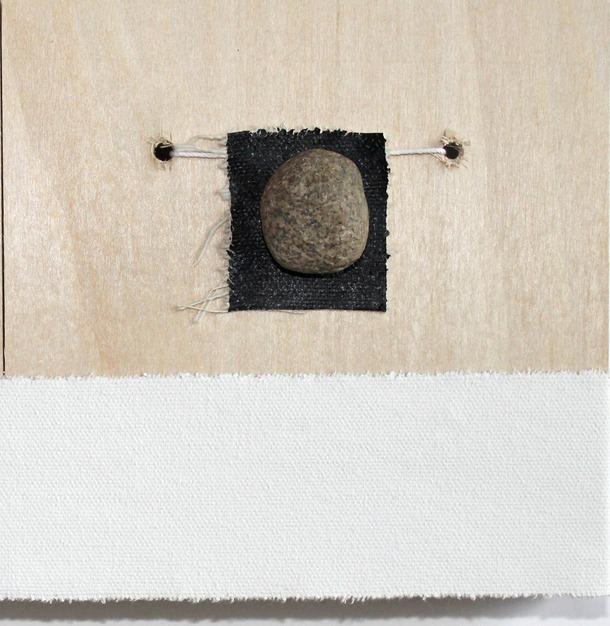
eries Contemporary Art Peripheral agazine Zelene Schlosberg SPECIAL ISSUE 35
City based artist Lydia Dona once stated that in order to make art today one has to reevaluate the conceptual language behind the mechanism of art making itself: do you create your works gesturally, instinctively? Or do you methodically transpose geometric schemes?
Most definitely the former. While critical thinking certainly plays a part, I trend toward the more instinctual. Often, I am trying to use these techniques to create the space inside and outside the artwork, to create dramatic tension. The holes in the work are like an entrance so

Special Edition agazine Contemporary Art Peripheral eries 36 SPECIAL ISSUE
the air and light can enter, so the artwork can breathe and shine inside and out. This three-dimensionality can hopefully create excitement in the viewer.
All these techniques are used liberally depending on the particular situation and how I
feel the materials responds to what I am doing. Basically, I want the art processes to happen very organically, almost as if the artwork is creating itself.
As you remarked in your artist statement, a

37 SPECIAL ISSUE Zelene Schlosberg eries Contemporary Art Peripheral agazine
central aspect of your artistic inquiry is focused on the exploration of the aesthetics of fragility and the meditative power of imagery. How do
your memories and your everyday life's experience fuel your creative process? And how do you think your works respond to it in

38 SPECIAL ISSUE Special Edition agazine Contemporary Art Peripheral eries
finding hidden, crystalized moments in the everyday?
Zelene Schlosberg: This is not a line of inquiry
that concerns or affects me directly…but of course, all of life’s experiences and memories accumulate and eventually affect my art making

eries Contemporary Art Peripheral agazine Zelene Schlosberg 39 SPECIAL ISSUE
subconsciously. My finished works may seem introverted or even silent, but the art process can be anywhere from delicate to violent, like when I hammer nails in o the word panel, or just break the canvas and then stitch the canvas pieces together.
The idea behind it is really from the reality of
the often harsh nature of contemporary life. That in turn makes me think that fragility is really the essence of life and that my artwork is just a representation of that idea.
Some viewers often think my work has some kind of curative quality, that it brings peace of mind through meditative means.

Special Edition agazine Contemporary Art Peripheral eries 40 SPECIAL ISSUE
As you put it, “the themes of transience and the powerful aesthetics of fragility are essential to certain streams of Eastern philosophy.” How do you consider the relationship between ancient heritage and the idea of “contemporariness” that affects our unstable and globalized, media-driven society?
Zelene Schlosberg: I think mediating or combining these two eras hints at a quality that our world could use more of these days: reconciliation. With each other, and with our planet. By having a variety of viewpoints (or eras, aesthetic frameworks), one almost by definition strives toward compassion and understanding.
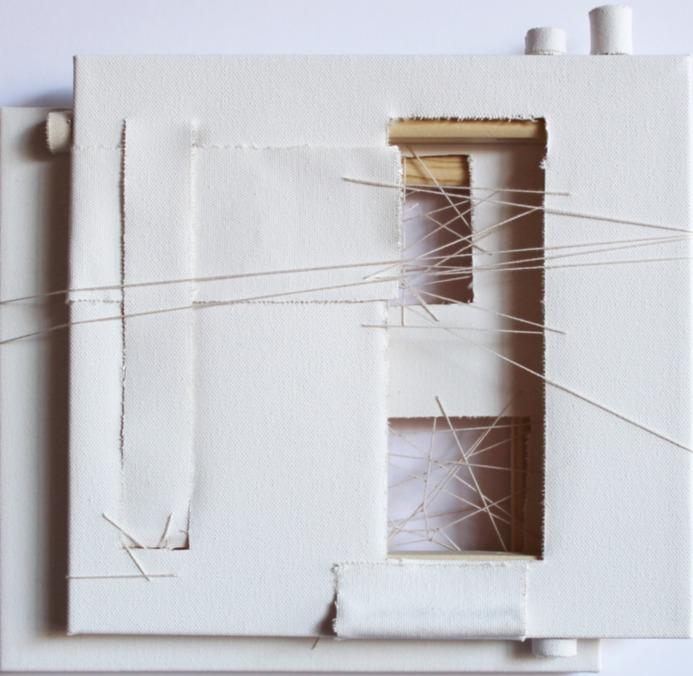
Zelene Schlosberg eries Contemporary Art Peripheral agazine 41 SPECIAL ISSUE
With the powerfully evocative, yet abstract quality of your works, and in particular the ones from your interesting River Noir series, your
artworks emanate, as you put it, “both a sense of melody and mystery” and they seem to invite the viewers to look inside of what appears to be

agazine Contemporary Art Peripheral eries Special Edition 42 SPECIAL ISSUE
seen, rather than its surface, providing the spectator with freedom to realize their own perception. How important is it for you to
invite the viewers to elaborate personal meaning? How open would you like your artworks to be understood? In particular, what

eries Contemporary Art Peripheral agazine Zelene Schlosberg 43 SPECIAL ISSUE
are you looking to emotionally raise in the viewers and how do you hope the viewers connect with your artworks?
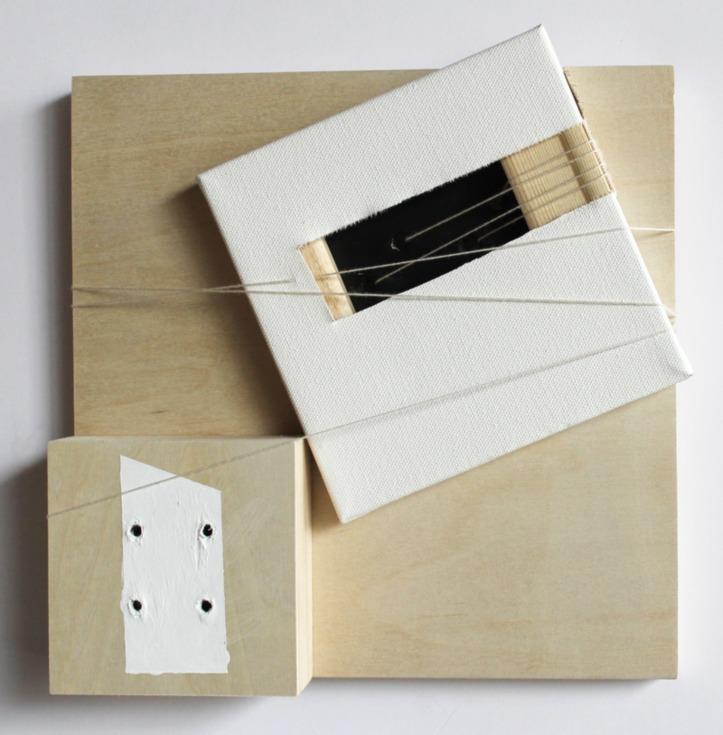
I think anyone dealing with art that doesn’t have
an inherent social or political message in it wants to invite a multitude of meanings. The fact that I am dealing in pure abstraction only heightens this feeling.
So, yes, I would very much hope that there is a
44 SPECIAL ISSUE agazine Contemporary Art Peripheral eries Special Edition
wide range of reactions to my work, and that any individual spectator has a very personal reaction to it.
Art making is a physical experience that reveals
not only a work of art but also a state of being: how do you consider the relationship between the emotional nature of the concepts that you explore in your artistic research and the physical aspect of your practice?

eries Contemporary Art Peripheral agazine Zelene Schlosberg 45 SPECIAL ISSUE
Zelene Schlosberg: I use a lot of alternative materials in my work, such as thread and stone.

Often the thread is tangled, and the physical reality of this “entanglement” certainly is intended to have an emotional counterpart, a “confused mind” if I’m being blunt. Also, the
use of stone, so often a source of meditative energy in Eastern religions, is also meant to have a visceral yet calming response to the viewer. “The medium is the message” is a wellknown phrase that comes to mind.
Over the years your artworks have been showcased in a number of occasions,
agazine Contemporary Art Peripheral eries Special Edition
SPECIAL ISSUE 46
including a number of solo shows, and your upcoming participation in shows in Illinois, Missouri, South Korea and London. How do you consider the nature of your relationship with your audience? And what do you hope your audience take away from your artworks? In particular, how do you consider the role of emerging online
technosphere in creating new links between artists and worldwide audience?
Zelene Schlosberg: Engaging the art world online is a tricky subject. On the one hand, it has the ability to level the playing field for any artist without regard to geography, social background, or artistic pedigree.
On the other hand, viewing works online is an extremely poor substitute for witnessing art in person, being able to walk around it, and to appreciate it its true three dimensionality, even if we are referring to canvas on a wall. In that sense, even visual art hanging on a wall can be thought of as a “performing art.”
The viewing of art in real time is hardly a static experience.
We have really appreciated the multifaceted nature of your artistic research and before leaving this stimulating conversation we would like to thank you for chatting with us and for sharing your thoughts, Zelene. What projects are you currently working on, and what are some of the ideas that you hope to explore in the future?
Zelene Schlosberg: I am more and more interested in installation, sculpture and genres that blur lines between norms. Right now I seem to me moving away from “canvas on wall”, but my mind is constantly reevaluating aesthetic possibilities, so who knows what even tomorrow will bring!
Certainly conceptual art is gaining more and more a foothold on my imagination, and the solo shows I have coming up I hope will reflect my new thinking in that realm of ideas. Thank you, it’s been a pleasure talking to you!
An interview by Josh Ryder, curator and Melissa C. Hilborn, curator peripheral.arteries@europe.com
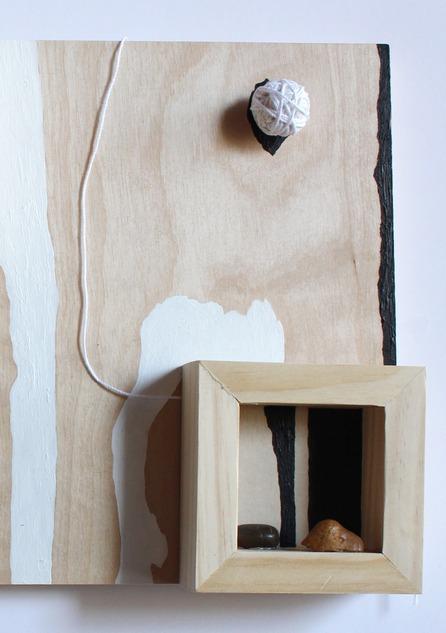
eries Contemporary Art Peripheral agazine Zelene Schlosberg 47 SPECIAL ISSUE
Peripheral ARTeries meets
Saúl G. Corona
Lives and works in Barcelona, Spain
In this moment in which we advance irremediably towards a completely technological world; in which social distances become more evident and broad; that we are more connected to someone from the other side of the world by means of a device of a few square centimeters, than to the person who has breakfast by our side; in this moment when appearance comes first; the skin, the superficial ... in this fast-moving, fast-burning, disposable and rusty world ... I want to stop for a moment, breathe ... And get inside ... pierce each other ... through physical contact, through breathing, calm ... through a hug.
I want to propose Love as the engine to restrain this cold and crazed world by excessive consumerism and pollution. Stop to feel, stop to share the wound, stop to hear and talk to us, stop to cover the wound of the other, stop ... and embrace away from the noise. My intention in painting is not to paint people, but souls: I want to paint souls with a harsh voice that have emerged from the faith of a hopeful cry.
We must build love again, build it as a building, a deep and elevated love: not a perfect romance: but a love with all its consequences; a love with forgiveness, a love with new opportunities, love towards the opposite sex and one's own, towards all people, all living beings; a deep and true love, a love without excuses.
In my work, to cover all this I use the figure of hugs. In an embrace, each person frees himself from his shell and mask and spreads all his inner tattoos on the other person. In an embrace the silence gallops hitting the breasts, the one goes into the other, the rest disappears. In this world that goes unchecked to the technological and the robotic, towards the cold and the appearance, towards the mathematically and strategically calculated; I am interested in the hot and the near, the imperfect and the felt, I am interested in the strength of feelings and their expression through colors. To define it in some way: I believe in the approach to the animal that, in these times when we forget about Gea, makes us more human
An
interview by
Josh Ryder, curator and Melissa C. Hilborn, curator peripheral.arteries@europe.com
Hello Saúl and welcome to Peripheral
ARTeries. Before starting to elaborate about your artistic production and we would like to invite our readers to visit www.proyectohaz.com in order to get
SPECIAL ISSUE 48
Special Edition agazine Contemporary Art Peripheral eries


Special Edition agazine Contemporary Art Peripheral eries 50 SPECIAL ISSUE
From the Cover the wound series


 Installation by Saúl G. Corona
Installation by Saúl G. Corona







 Pattern 3, 120x80cm 2019 acrylic
Pattern 3, 120x80cm 2019 acrylic



 Supergirl 6, 2018 acrylic 120x90 cm
Supergirl 6, 2018 acrylic 120x90 cm




 The 1st day of summer, acrylic 120x80 cm 2018
The 1st day of summer, acrylic 120x80 cm 2018
 The 2nd day of summer, 2018 acrylic 100x70 cm
The 2nd day of summer, 2018 acrylic 100x70 cm




























